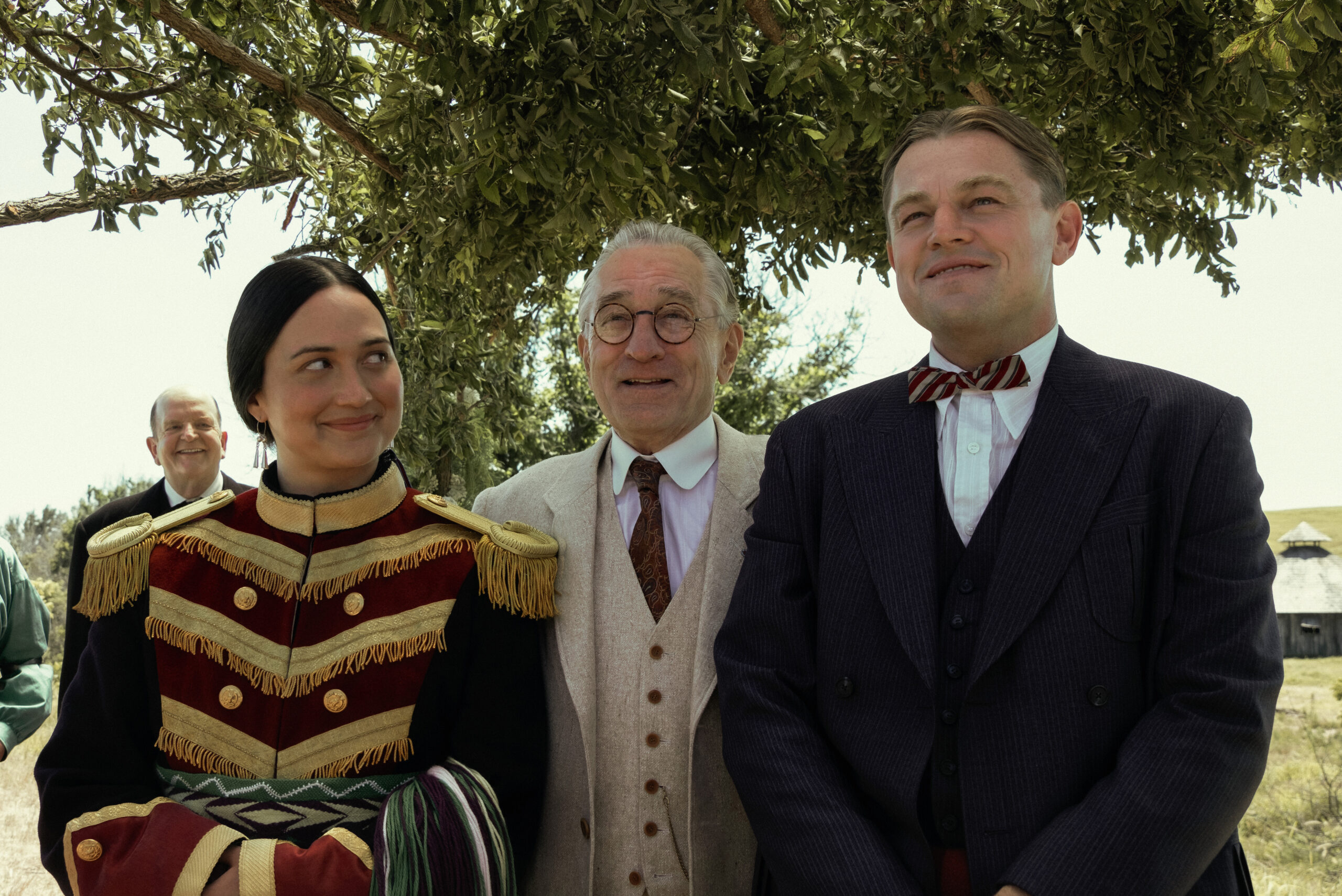The lights dim, the audience hushes, and a tribal chant rumbles out of the silence. Immediately, “Killers of the Flower Moon” transports us into the 1920s, when this story of the Osage nation begins. Martin Scorsese delivers his specialty of crime dramas in this three-and-a-half hour flick, slowly sizzling spectators in the outrageous crimes committed by the swindling white infiltrators towards the people of Osage. Starring the timeless Leonardo DiCaprio, legend Robert De Niro, and breakout actress Lily Gladstone, Scorsese leads this star-studded cast straight to the top of this year’s film rankings.
It has been notoriously difficult for great Hollywood directors to keep up with the ever-flowing trends and rapidity of movie consumers; Scorsese is an exception. Prepared to leave the theater with bloodshot eyes and a yawn, I was met with a feature that kept me on the edge of my seat, subconsciously guessing what the next turn of events would be. Despite a runtime that guarantees to turn people away, Scorsese’s twenty-sixth narrative film feels much shorter than many epics that run shorter, thanks to his long-time collaborative editor Thelma Schoonmaker. Her filmography, which includes “Raging Bull” (1980), “The Aviator” (2004), and “The Wolf of Wall Street” (2013), is as versatile as it goes. The fast-paced cuts and parallel storylines through both the Osage County tribe and the murderers in William Hale (De Niro)’s family gang keep a faster generation drawn to the screen. In fact, the end of the film left me yearning for even more.
Not only is the editing sharp, crisp, and current, but the cinematography of Scorsese flicks seem to evolve with the times as well. Shot on film, the visuals of D.P. Rodrigo Prieto returns with soft graininess of frames that stretch across a theater screen, displaying beautiful landscapes of Midwestern America, the grotesque violence that is a Scorsese staple, and the complete profiles of the dynamic ensemble cast.
Leonardo DiCaprio delivers a powerful role in Ernest Burkhart, a complicated lead role that reflects his reputation for acting from the heart. Burkhart struggles with genuinely falling in love with the Osage people and serving his swindling uncle William King Hale (De Niro), Ernest is left to make decisions much more convoluted than black and white.
A duo that never fails to deliver is the legendary Scorsese-De Niro pair; “Killers of the Flower Moon” spotlights this collaboration in a similar way as “Goodfellas”, but in an even more powerful way. De Niro looms over the Osage Nation as an elder and benefactor for the residents, masquerading as a protector. In reality, he is the terror that realms over the tribe, plotting to murder them one by one, and collecting the oil money from the land that they “inherited.” Scorsese co-wrote and directed this masterpiece in a way that allowed De Niro to place his powerful presence on screen, but in such subtle ways throughout the plot that his impact does not resonate until the havoc flashing before us is too late to recant.
“Lily Gladstone” is the name I anticipate to echo all throughout the film festival circuit. From the first frame she inhabits, Gladstone demands focus, and never does the audience’s gaze leave her movements, however minimal they are. Every line, every blink, every tear, is added onto the spectator’s shoulders, leaving us bearing the remorse and empathy of the Osage victims, all through Gladstone’s performance.
The last scene of “Killers of the Flower Moon” was shocking, and in all honesty, gave the confidence to assert that Martin Scorsese understands his audience, the time, and still does not care to appease production companies or streaming services. Instead, he chooses to pursue this passion project, guiding the audience by his personal hand, in his own time, and gives us a crime drama that lives up to his past epics.
Article written by Ian Wang.


